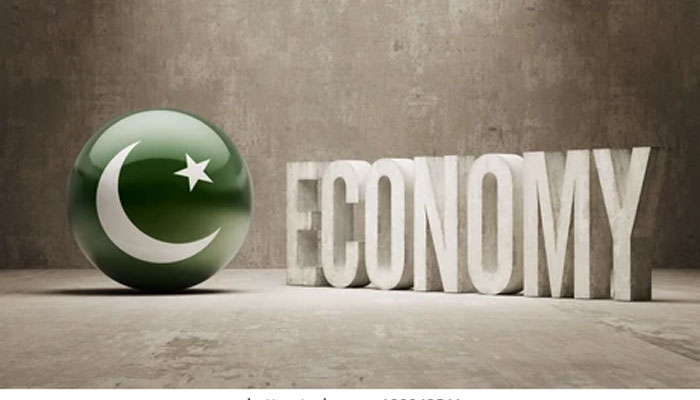Monthly Economic Indicator: Finance Ministry warns of potential risks to Pak economy
ISLAMABAD: The Ministry of Finance on Saturday warned of potential risks to Pakistan’s economy and stated that an increase in international commodity prices could build pressure on a country’s domestic inflation as well as on the Balance of Payments (BoPs).
In its monthly economic outlook for August 2021, the Ministry of Finance stated that the risk of pandemic still exists. The government has followed smart lockdown policies with restricting indoor activities which may have some impact on businesses especially related to other private services.
“Further, an increase in international commodity prices can build pressure on domestic inflation as well as on the Balance of Payments” warned the Ministry and added that however, the government measures to build strategic reserves, especially related to food along with initiatives to enhance exports, will definitely mitigate the associated risks.
Further, the recent geopolitical situation will help Pakistan to grab more market share through exports.
The revival of economic activities along with an accelerated vaccination process, there are strong expectations about economic growth in FY2022.
Inflation: Pakistan’s inflation rate is mainly driven by current and past fiscal and monetary policies, international commodity prices, USD exchange rate, seasonal factors and economic agents’ expectations concerning the future developments of these indicators. Also, government structural policies to improve the functioning of markets and in particular the food markets play an important role. In recent months, the YoY inflation rate is on a declining trend. It is expected that, in the absence of any major unexpected inflationary shocks, inflation may stabilise in August, before resuming its downward trend in the coming months.
If no new inflationary impulses would occur in August, YoY inflation would decelerate from 8.4 percent in July to around 7.7 percent in August. The Month on Month (MoM) inflationary impulses in August may come from second-round effects of previous increases in international commodity prices, from increases in administrated energy prices and currency depreciation.
Further, the government efforts to increase the efficiency of domestic food markets are still in place and are continuously being monitored and strengthened. Thus, all in all, YoY inflation in August is expected to fluctuate around the level attained in July within a range of 7.6 – 9.2 percent.
Agriculture: The inputs availability is satisfactory and it is expected that the agriculture sector will continue to perform better on account of continuing support of the government to the sector. The government has given prime importance to agriculture being the mainstay of economic growth due to its linkages with employment, trade and food security. In this regard, the government has taken steps for supplying improved seeds and fertilizer. Enhancing agriculture credit for mechanised farming, agro-based industries and cold chains & storage facilities.
Further, a network of agri-malls is proposed to be spread across the country to minimize the role of the middle man. An additional amount of Rs25 billion is being allocated for the development of the agriculture sector. Thus, the agriculture sector is expected to perform well in absence of any adverse climate shock.
Industrial activity: Industrial activity, measured by the LSM index is the sector that is most exposed to external conditions like developments in international markets. Since March 2021, the LSM index recorded double digit YoY growth numbers. It is expected that trend will continue in July FY2022 as well. These staggering high growth rates of the LSM output reflect low base effects and also the strong momentum of the current economic expansion.
The Monthly Economic Indicator (MEI) is based on combining monthly data of indicators that are proven to be correlated with GDP at constant prices. It should be noted that some of the data underlying the July MEI are still provisional and may be revised next month. In May 2021, PBS published 3.9 percent as the official projected economic growth rate for FY2021 based on 9 months. The strong acceleration of the MEI during the last quarter of 2021, indicates that the annual GDP growth in FY2021 may exceed the provisional figure released by PBS.
Since March 2021, MEI fluctuates at a significantly higher level as compared to the previous months of FY2021. This steep increase in the MEI during the last months of 2021 reflects the extraordinary strong acceleration in LSM growth on a YoY basis (which is known to exert significant multiplier effects on important segments of the services sector). Further, the rebound in imports, is another indicator of strong expansion in economic activity.
In July 2021, The MEI shows continued strong growth, mainly driven by several factors. First, an expected continued strong YoY growth of LSM in July. Furthermore, as observed in July continued cyclical uptrend in the main trading partners, continued strong growth in imports and deceleration of inflation.
According to Balance of Payments (BoP) data, imports of goods and services spiked in June 2021, but return to normal level in July 2021. Usually, both June and July, but especially June, are characterised by positive seasonal effects. This positive seasonal impulse is expected to disappear in August. On the other hand, other factors, such as the recent increases in international oil prices and the ongoing revival of economic growth, may stimulate imports. It is expected that imports of goods and services will settle at around $6 billion in August 2021. Contrary to imports, exports of goods and services, according to BoP data, usually experience negative seasonality during June through September.
The moderation of this seasonal effect, together with the ongoing strong recovery in Pakistan’s main export markets, the momentum in domestic economic dynamism and specific government policies to stimulate exports are expected to guide exports of goods and services towards the $3 billion in August and beyond in subsequent months. It is expected that trade deficit in goods and services could stabilise to approximately $3 billion in August with expectations about remittances to be stabilised around $2.5 billion and taking into account the other secondary income and primary income flows, the current account would remain in deficit at moderate monthly levels of around $0.5 billion in the coming month.
These expectations depend on the absence of any unexpected negative shocks which may be generated by the potential slowdown of the economic revival abroad (due to loss of confidence, inflation fears, uncertainty for tapering of monetary accommodation and geopolitical risks, etc.). An international and domestic upsurge in COVID-19 infections remains an important risk factor.
Fiscal: During FY2021, the fiscal consolidation efforts remained on track. The successful consolidation achieved on the back of prudent expenditure management and revenue mobilisation efforts. For FY2022, the fiscal deficit is expected to reduce further.
In FY2021, tax revenue increased by 18.4 percent, whereas in July FY2022, tax collection climbed up by 42.5 percent, indicating a good start to the new fiscal year. For FY2022, the tax collection is expected to reach Rs5,829 billion. To achieve the target, the government is pursuing a comprehensive tax policy that focuses on expanding the tax base by identifying new taxpayers, gradually eliminating exemptions & concessionary provisions, along with lowering tax rates.
These achievements in the fiscal sector are important, especially when Pakistan like the whole world is constantly battling the resurgence of COVID 19. The persistence in consolidation efforts would pave the way to create fiscal space that would enable the government to withstand any untoward situation.
Way Forward: Recent developments in Pakistan’s macroeconomic indicators are positive. In absence of any major unexpected negative shocks, the economy is moving on a balanced and sustainable growth path. The challenge remains to elevate this sustainable growth path to a higher level. This requires extending Pakistan’s production capacity and ensuring that a sufficient proportion of this additional production is exported, besides satisfying the needs of domestic consumers. Enhancing production capacity and increasing its efficiency is not possible without directing a larger proportion of the available and future income towards investments, instead of consumption.
-
 Chevy Chase Shares Disappointment After 'SNL50: The Anniversary Special' Snub
Chevy Chase Shares Disappointment After 'SNL50: The Anniversary Special' Snub -
 Samuel L. Jackson's Old Movie Found New Life: Here's How
Samuel L. Jackson's Old Movie Found New Life: Here's How -
 Nobel Prize Snub Hardens Donald Trump's Tone On ‘peace’
Nobel Prize Snub Hardens Donald Trump's Tone On ‘peace’ -
 What's Prince Harry's Case Against The Daily Mail's Publisher?
What's Prince Harry's Case Against The Daily Mail's Publisher? -
 'Matilda' Star Mara Wilson Breaks Silence On AI's 'deepfake Apocalypse' After Being Abused
'Matilda' Star Mara Wilson Breaks Silence On AI's 'deepfake Apocalypse' After Being Abused -
 Meghan Markle 'ruined' Prince Harry's Life?
Meghan Markle 'ruined' Prince Harry's Life? -
 Super Bowl Halftime Show Gets Another Attraction Besides Bad Bunny
Super Bowl Halftime Show Gets Another Attraction Besides Bad Bunny -
 Princess Irene's Coffin Arrives For Funeral Rites
Princess Irene's Coffin Arrives For Funeral Rites -
 Sean Penn's Gay Role Interview Resurfaces After LA Stroll With Valeria Nicov
Sean Penn's Gay Role Interview Resurfaces After LA Stroll With Valeria Nicov -
 FBI’s Most Wanted Caught After 10 Years In Mexico
FBI’s Most Wanted Caught After 10 Years In Mexico -
 Inside Kate Middleton's Meaningful Nod To Own Milestone
Inside Kate Middleton's Meaningful Nod To Own Milestone -
 Zachary Levi 'running' To Build His Future In Politics?
Zachary Levi 'running' To Build His Future In Politics? -
 Andrew Lands In Fresh Major Trouble After Princess Eugenie Left Him 'devastated'
Andrew Lands In Fresh Major Trouble After Princess Eugenie Left Him 'devastated' -
 Colleen Hoover Shares Major Update About Cancer Treatment
Colleen Hoover Shares Major Update About Cancer Treatment -
 UK Starmer Rules Out US Trade War, Calls For ‘calm Diplomacy’ Over Greenland
UK Starmer Rules Out US Trade War, Calls For ‘calm Diplomacy’ Over Greenland -
 Billy Bob Thornton Clears The Air About His Exit From 'Landman'
Billy Bob Thornton Clears The Air About His Exit From 'Landman'




